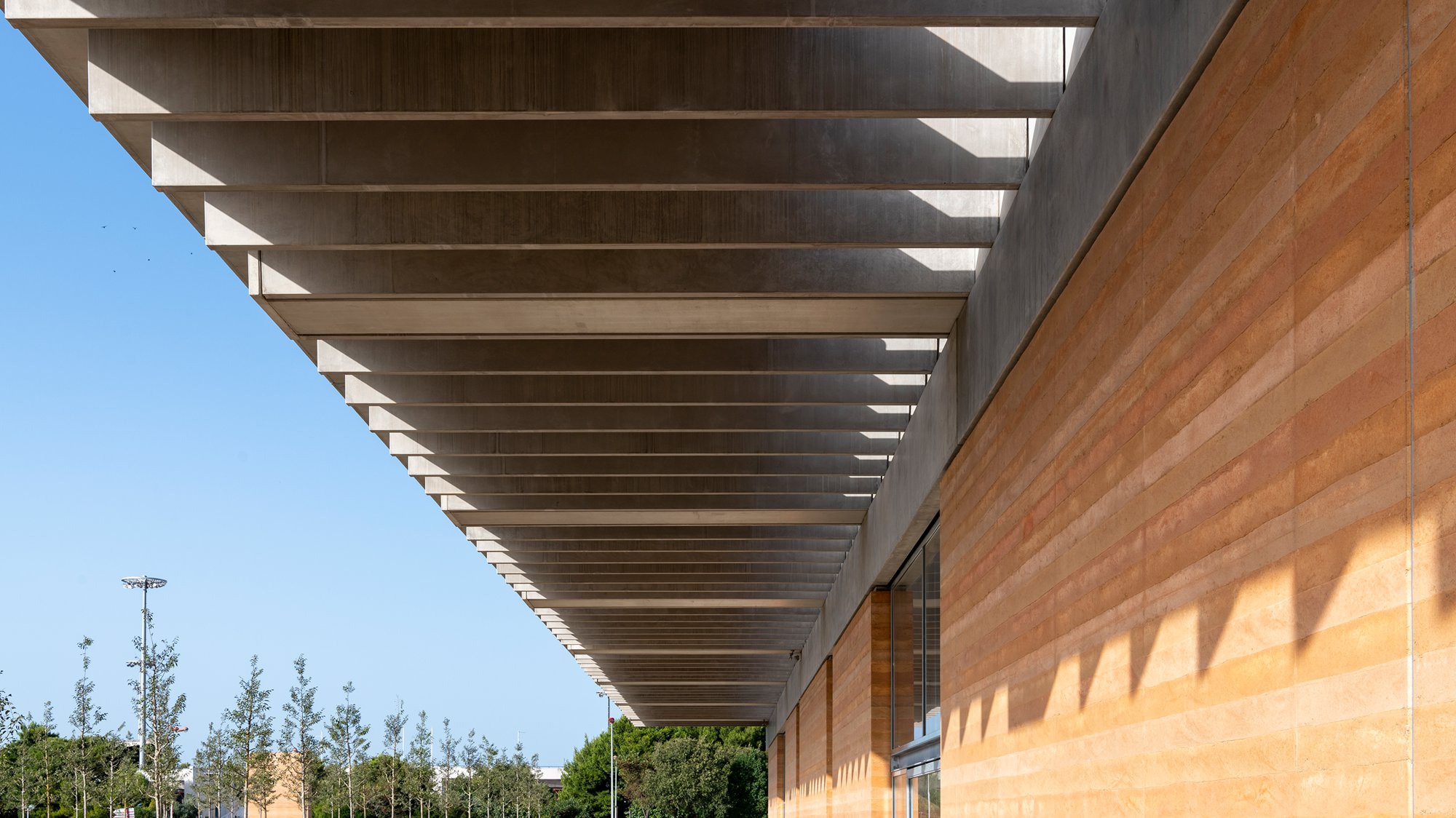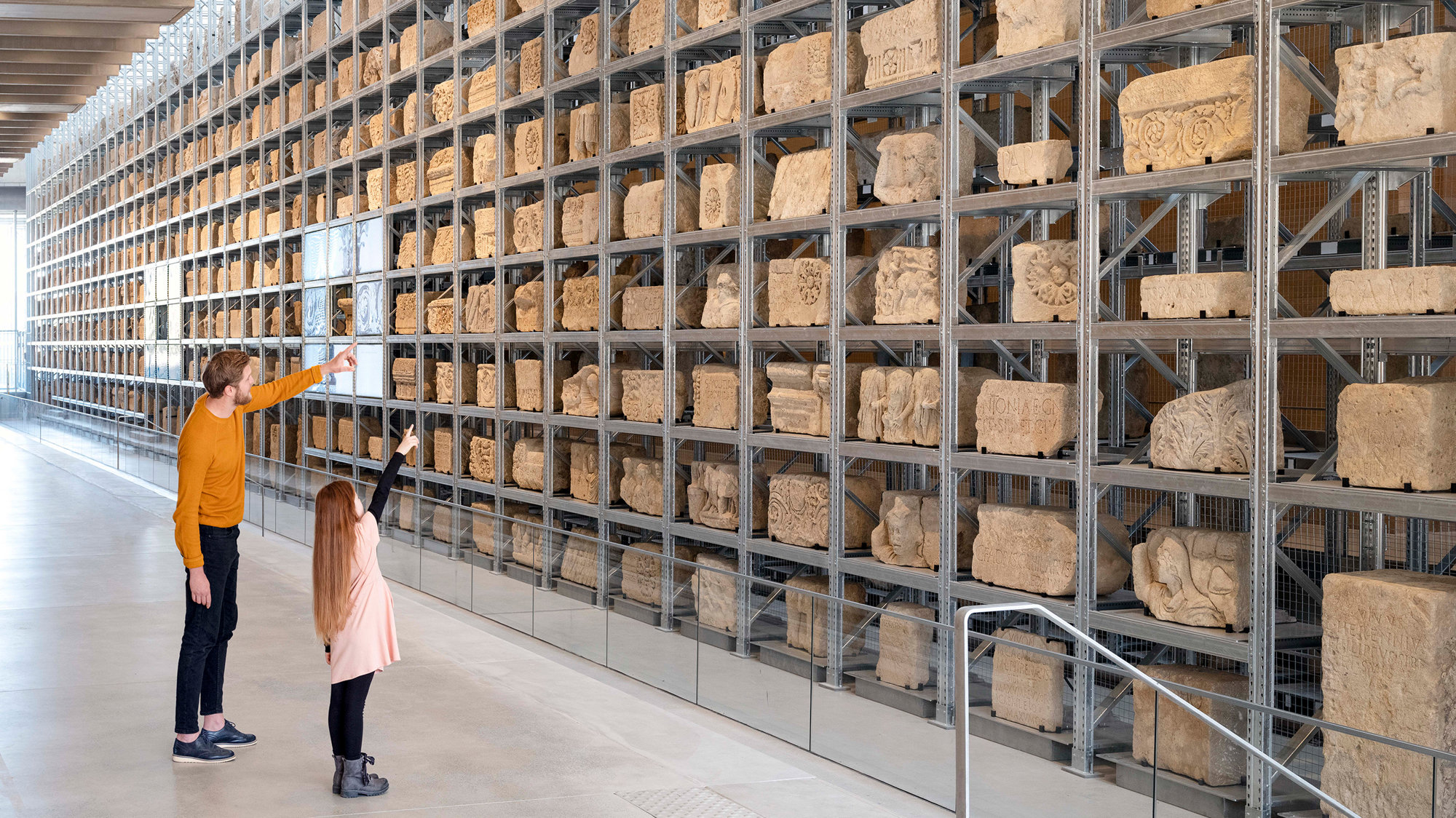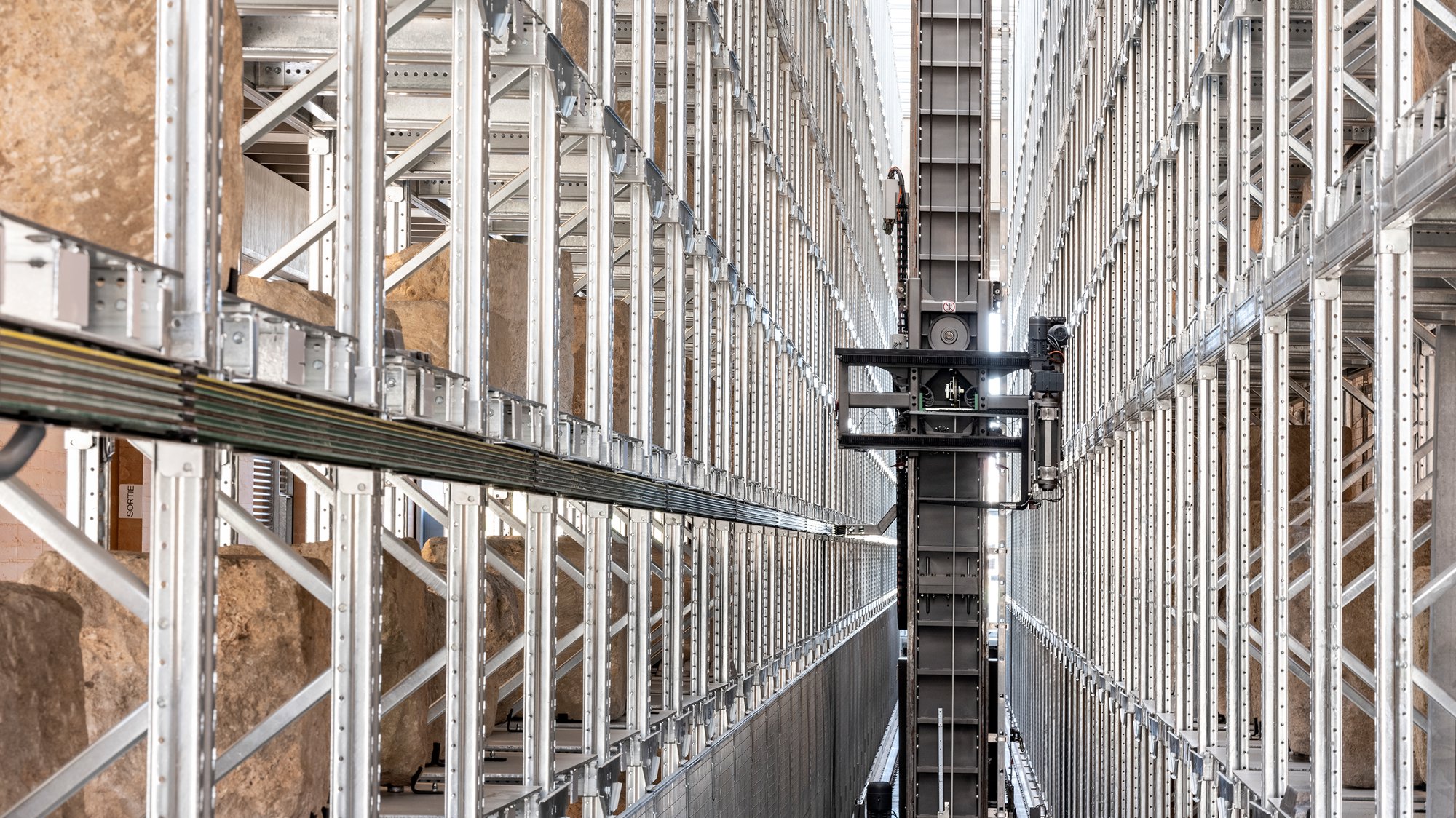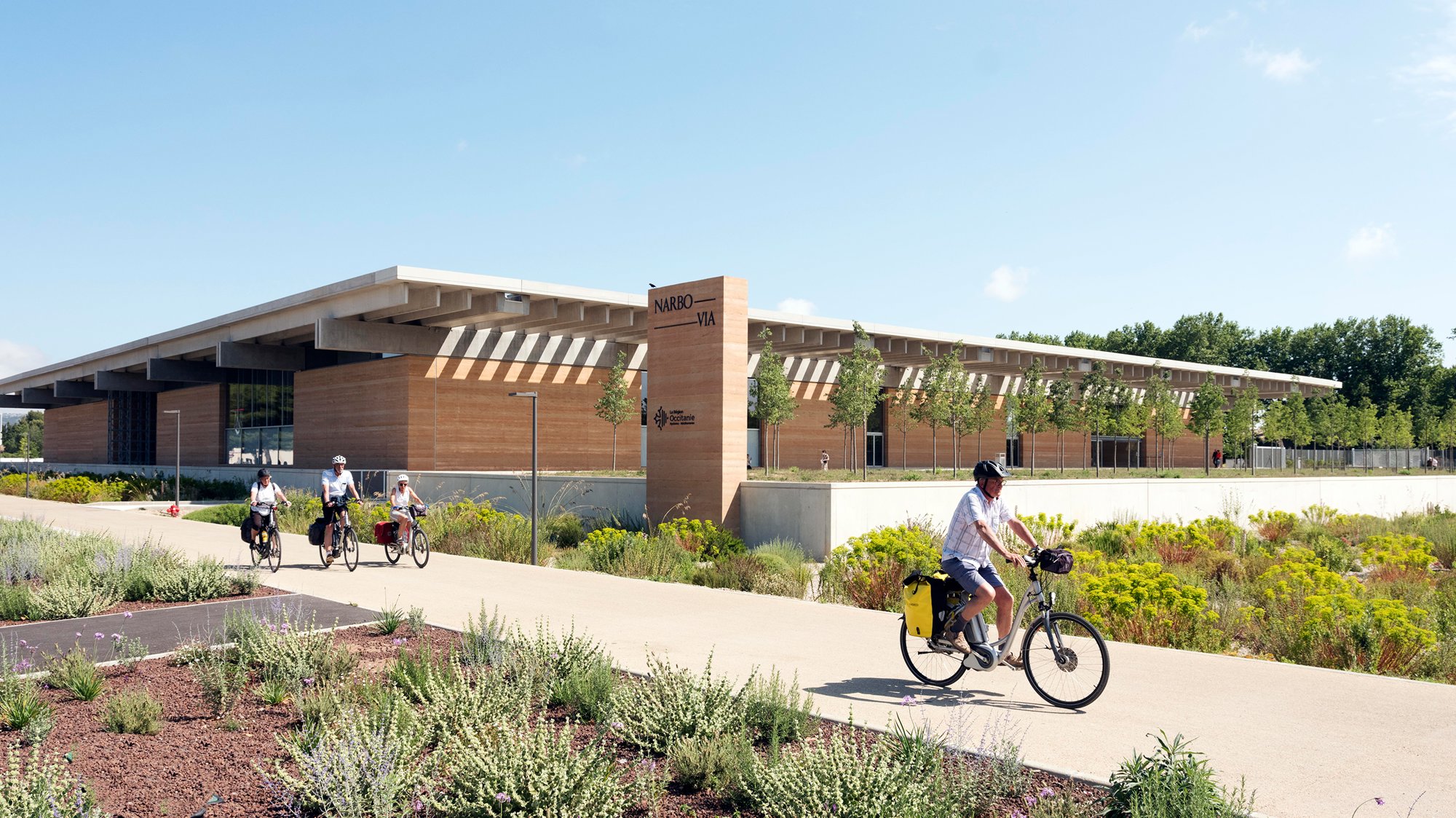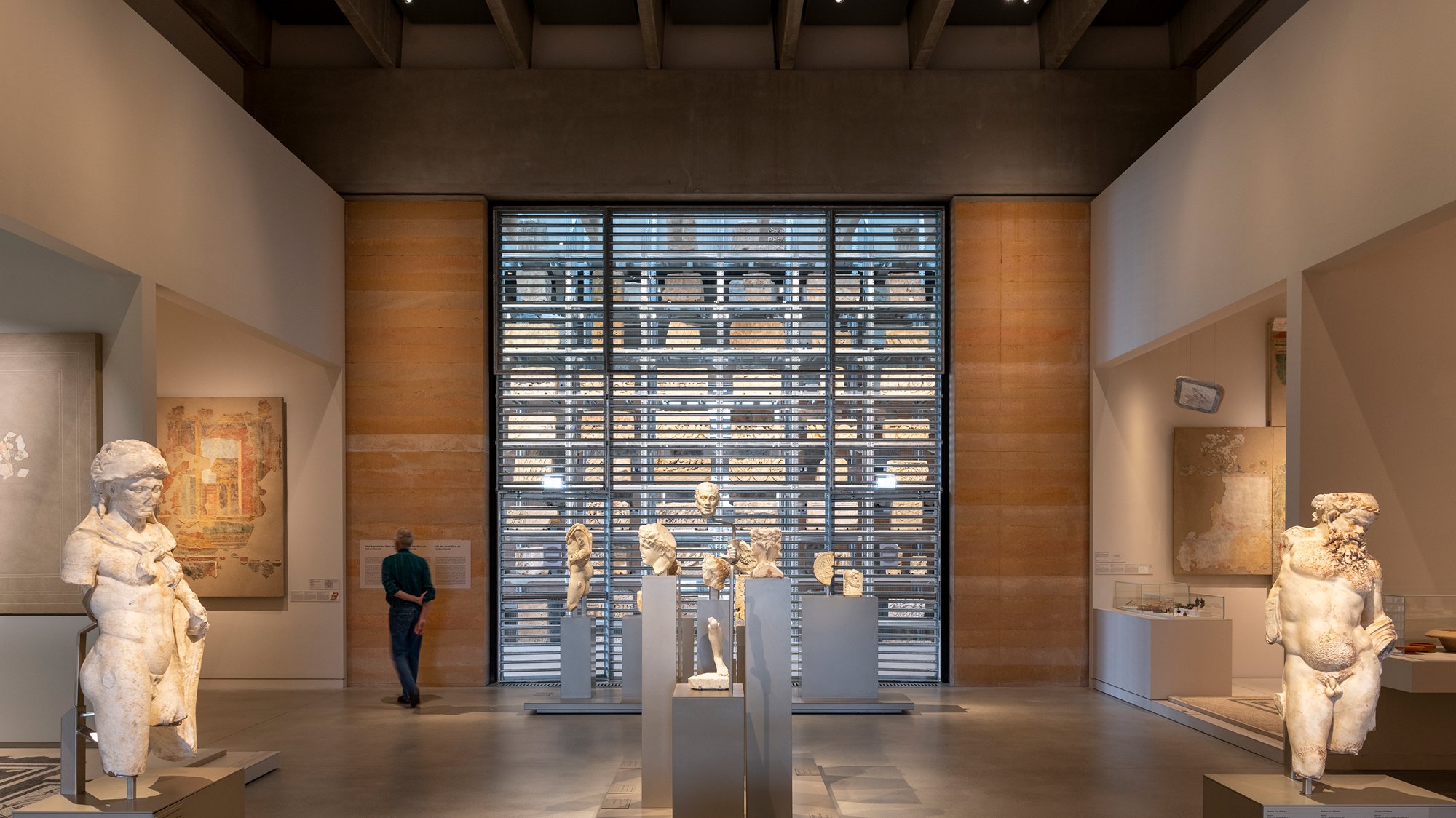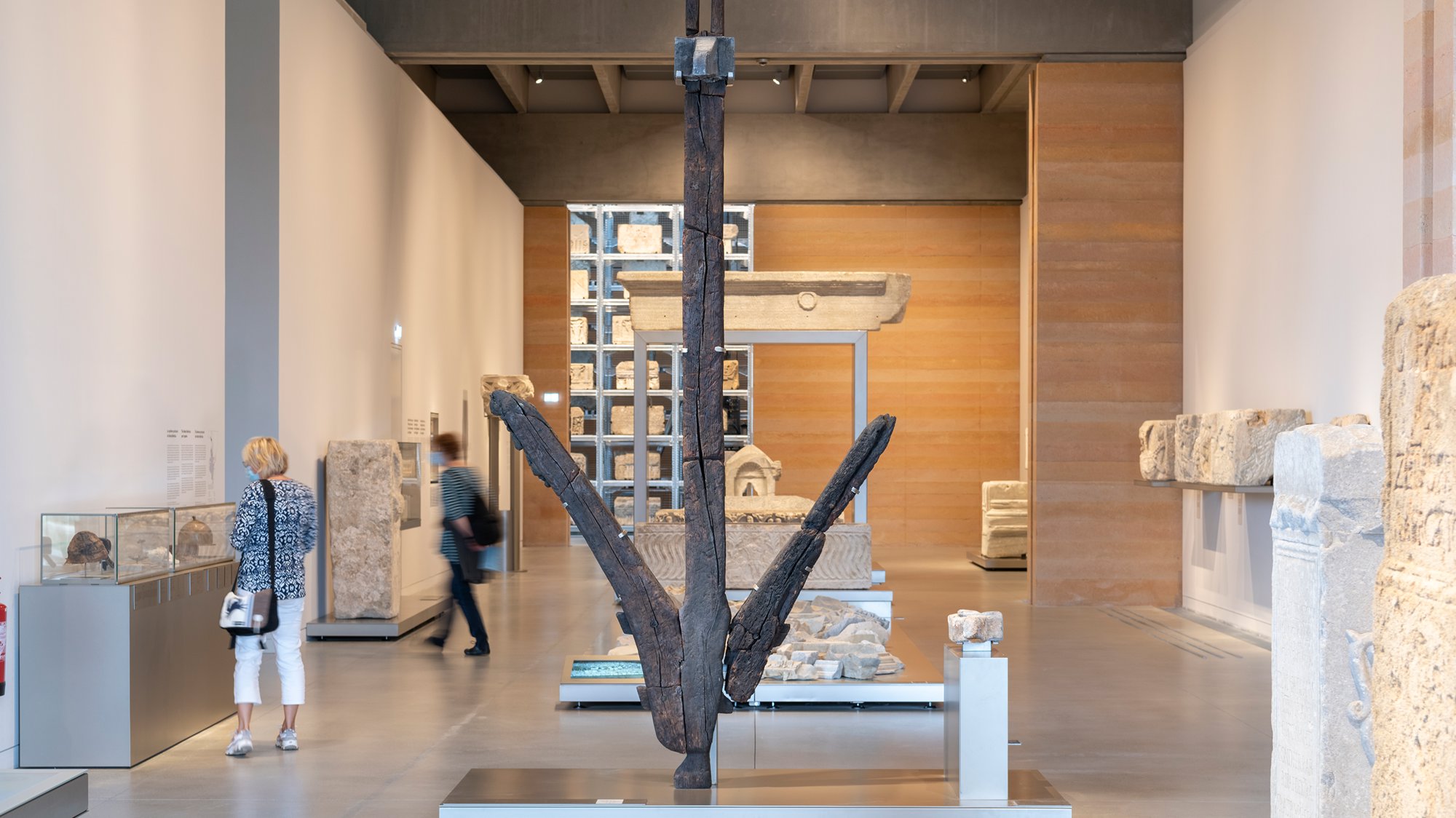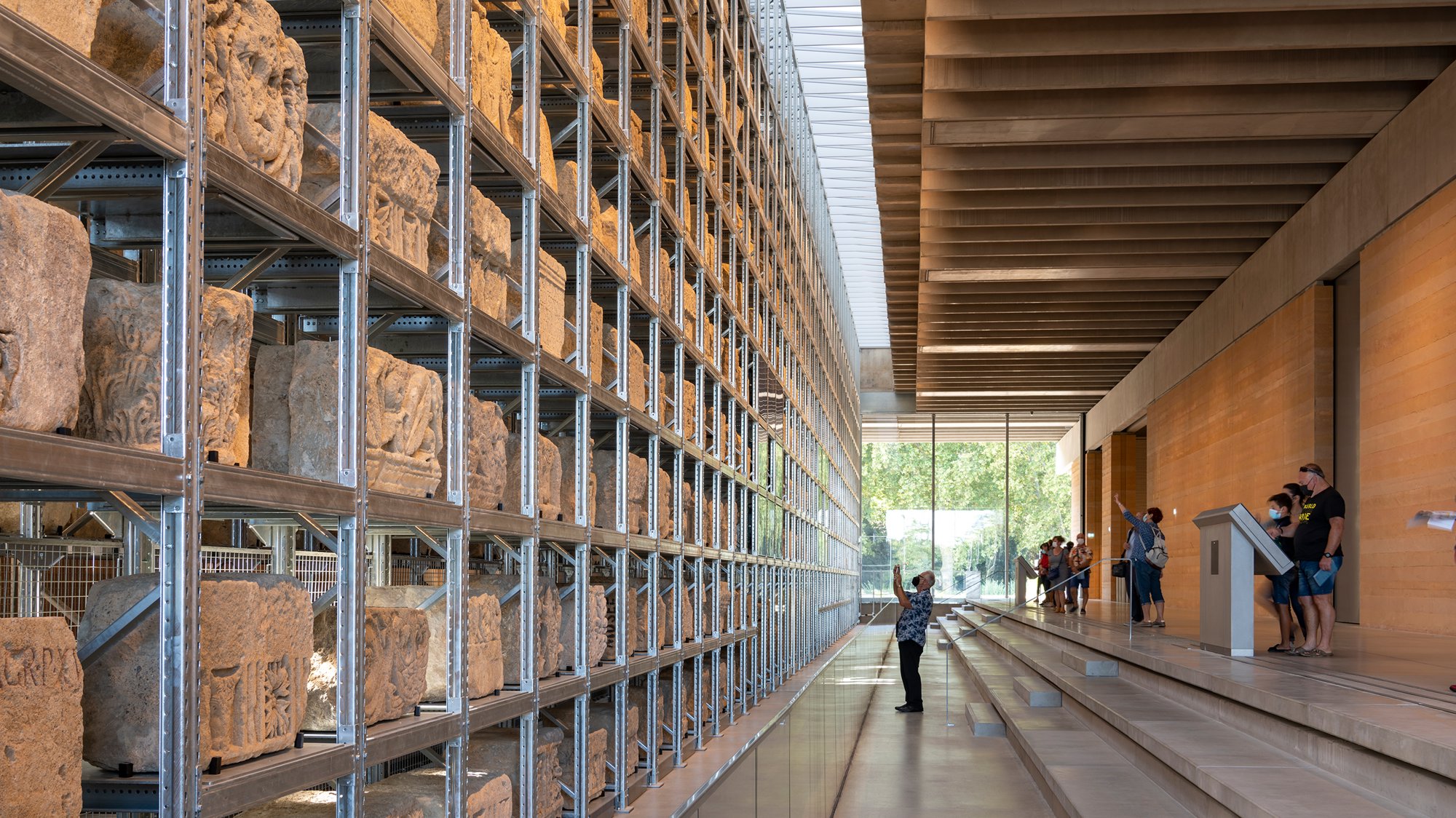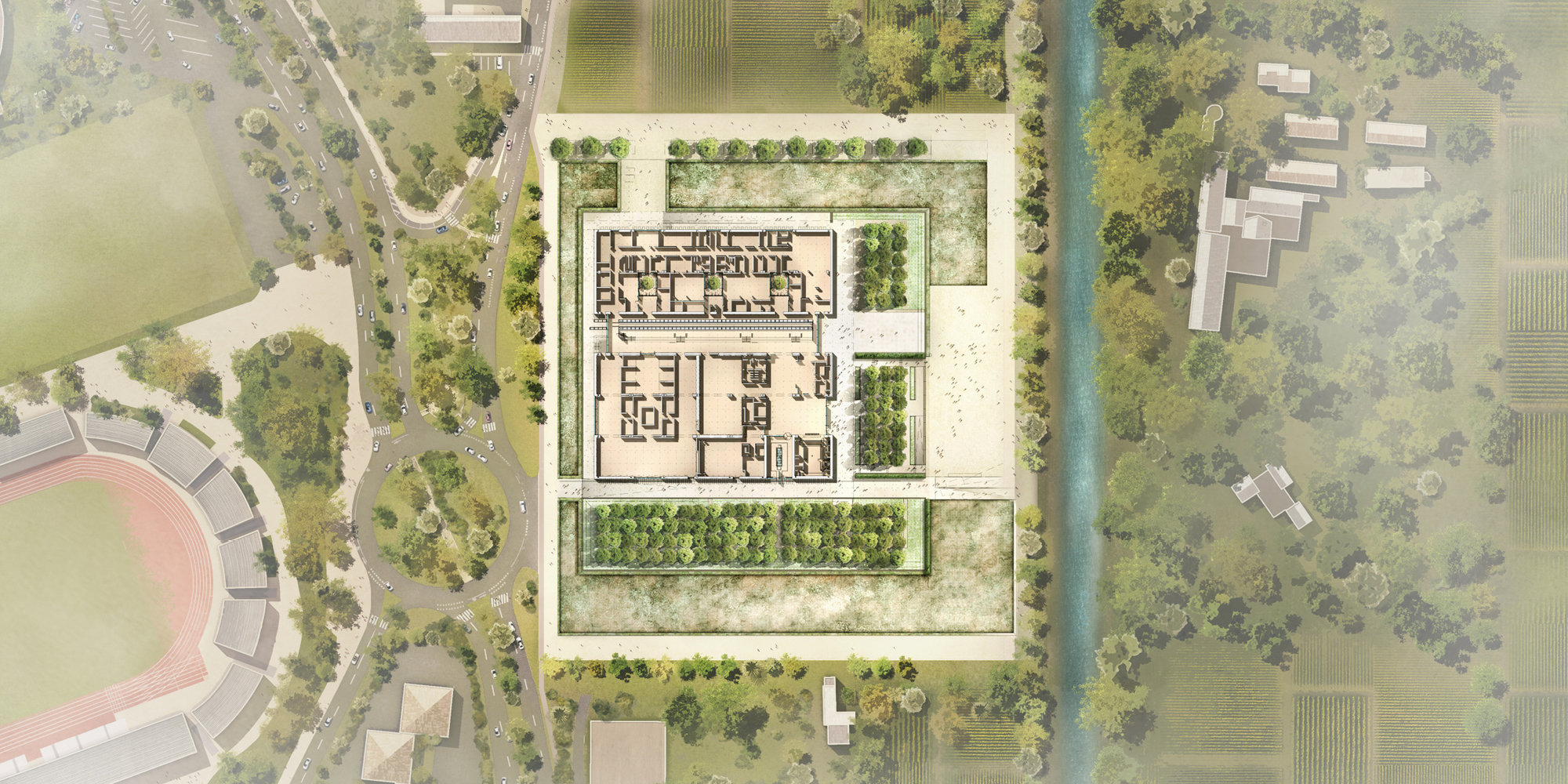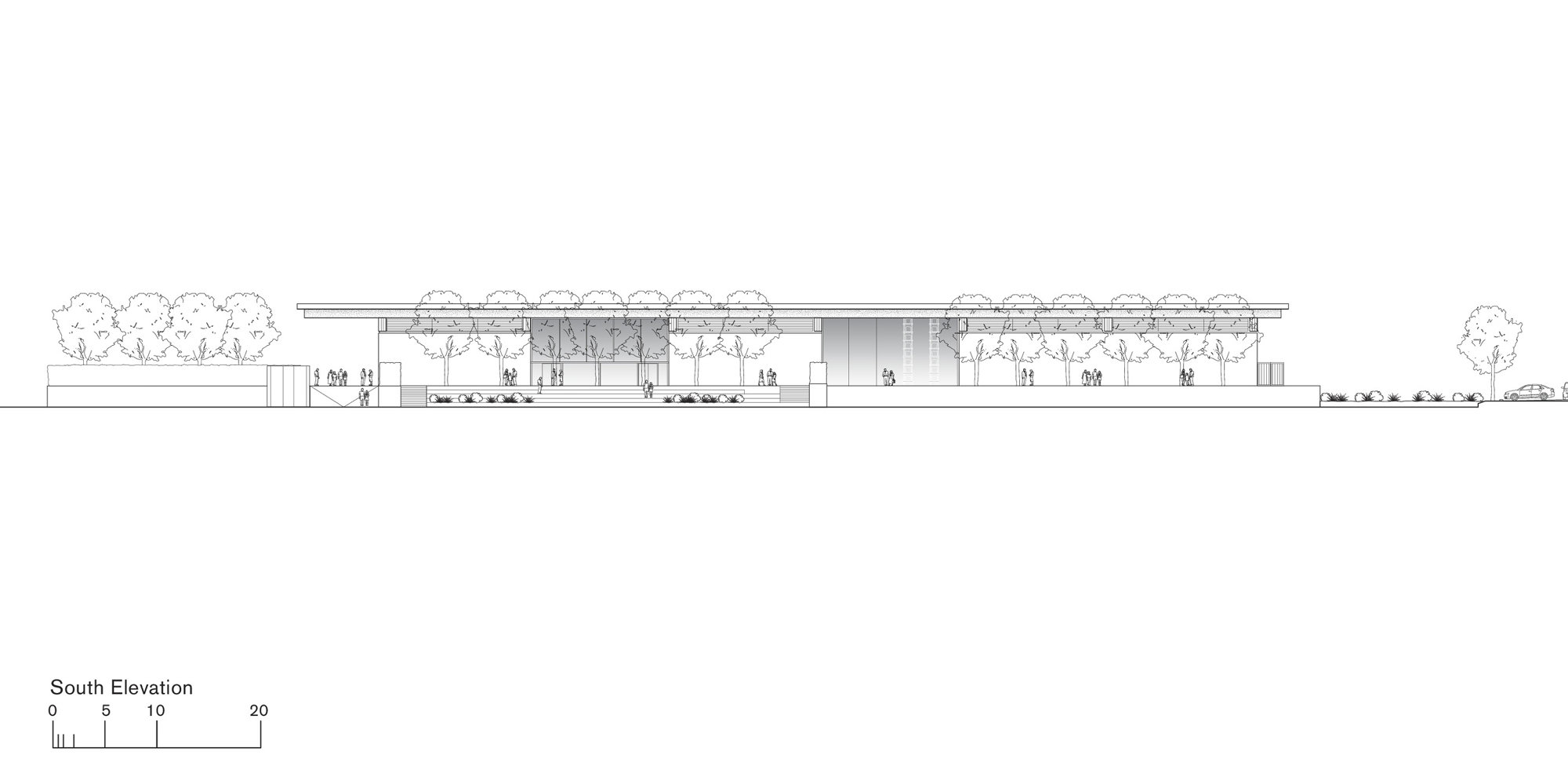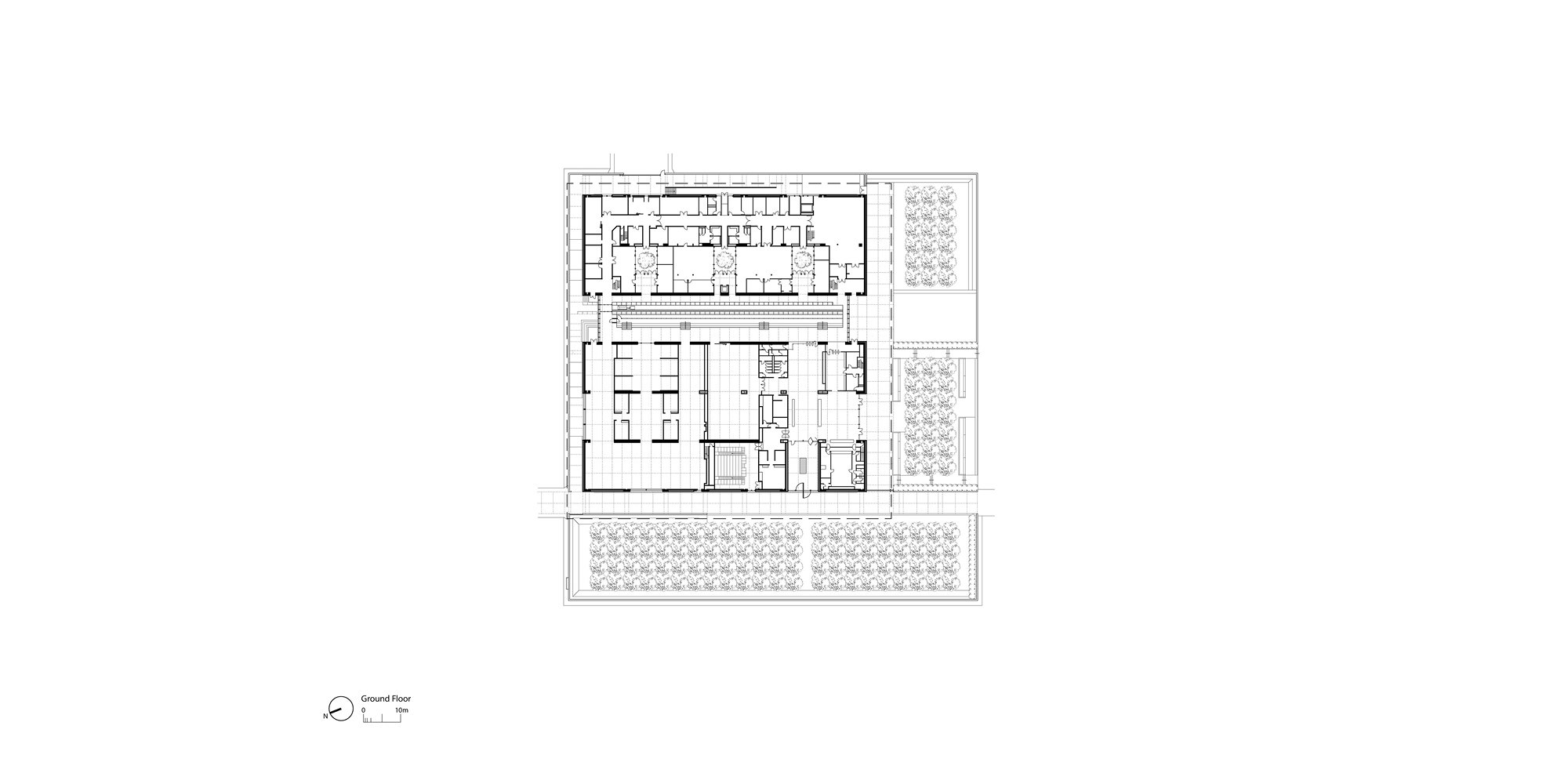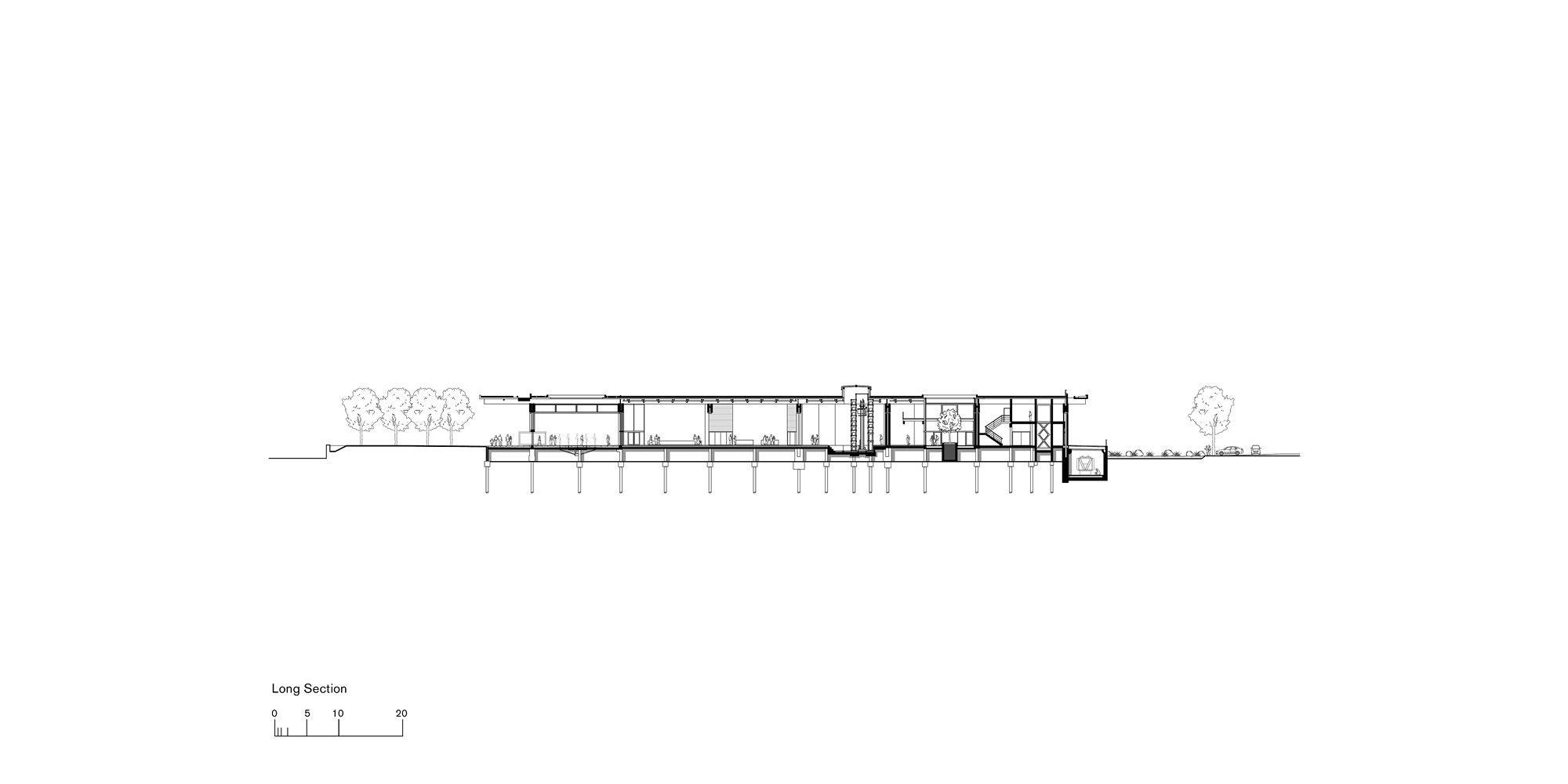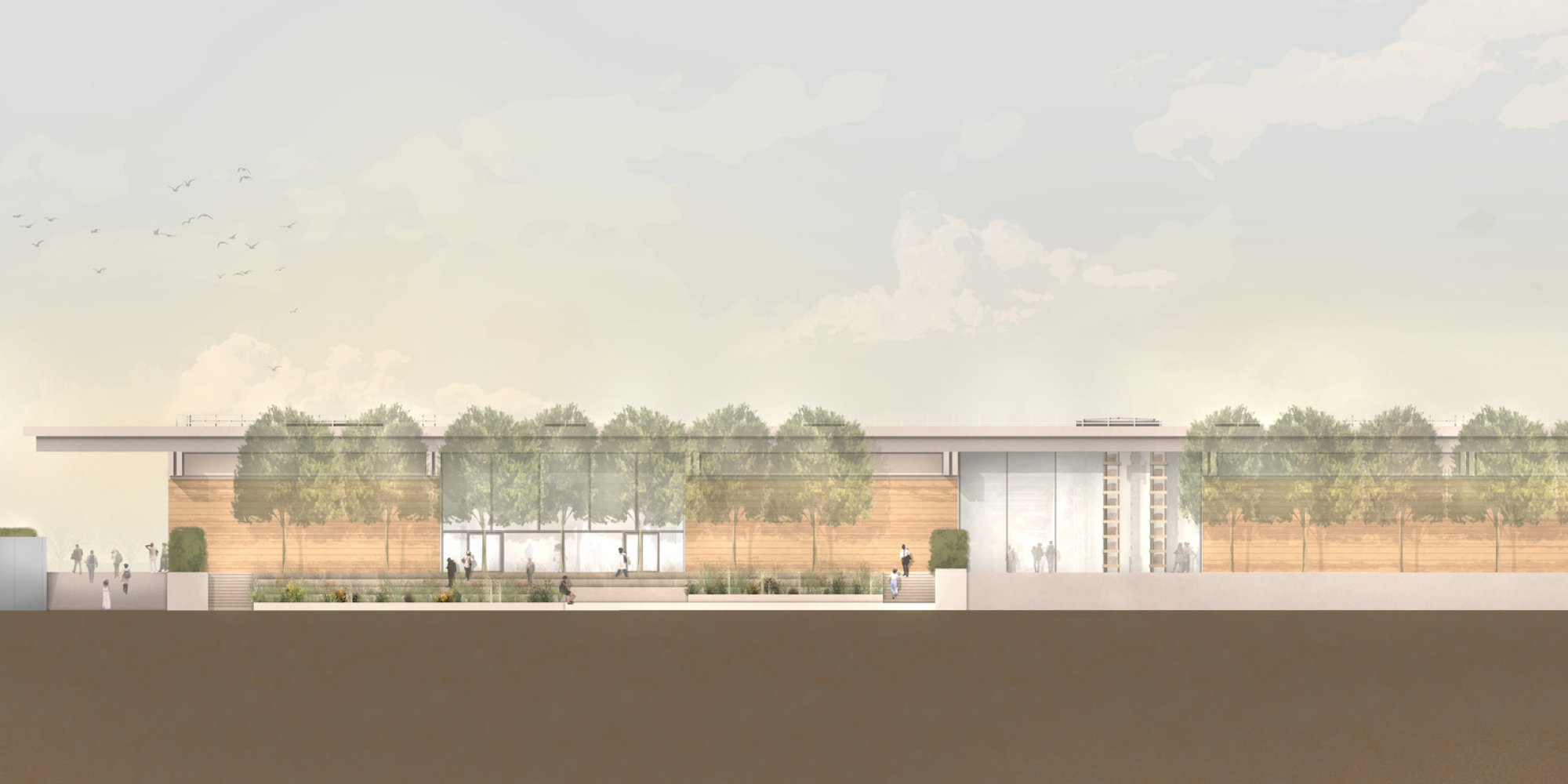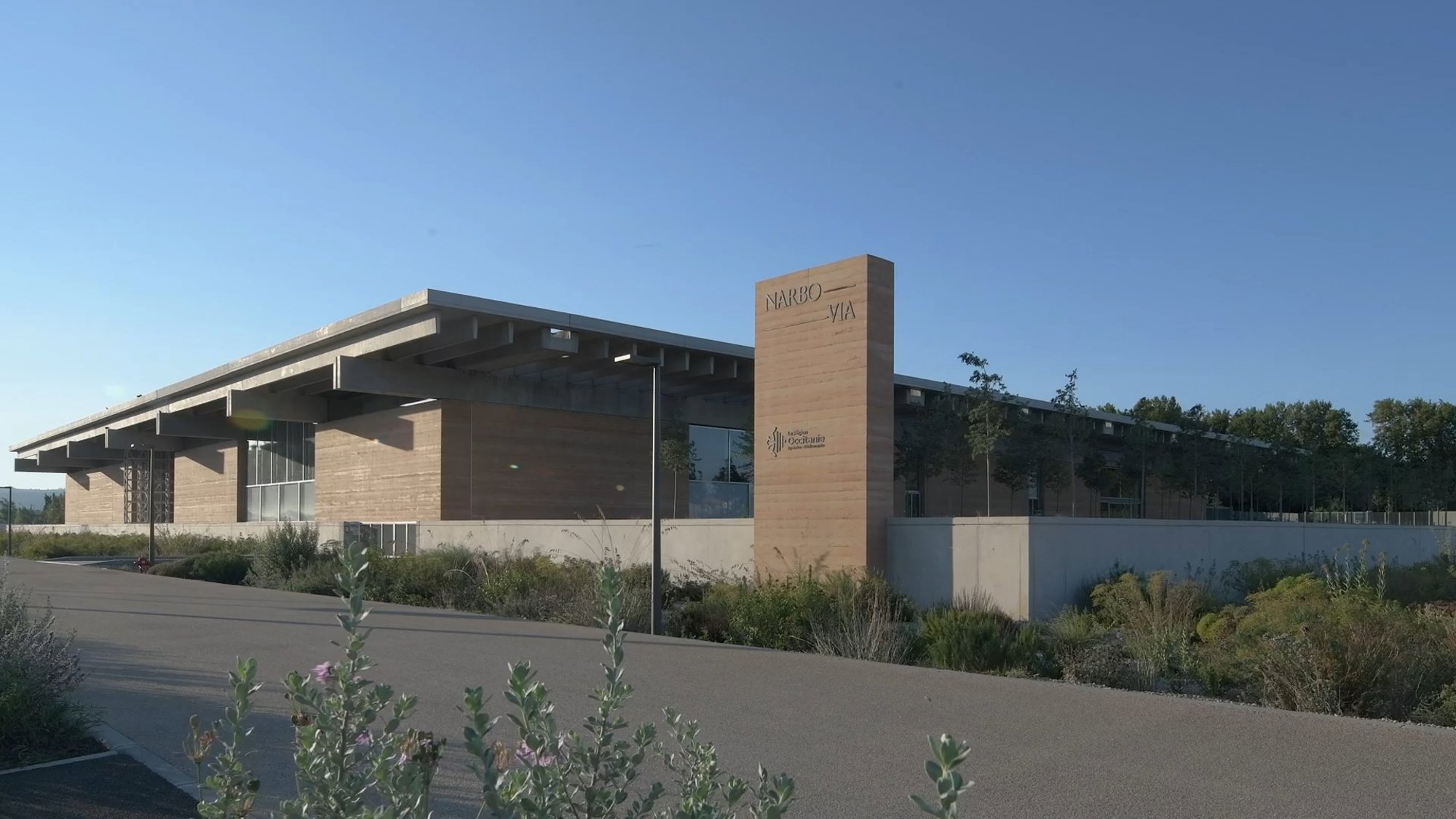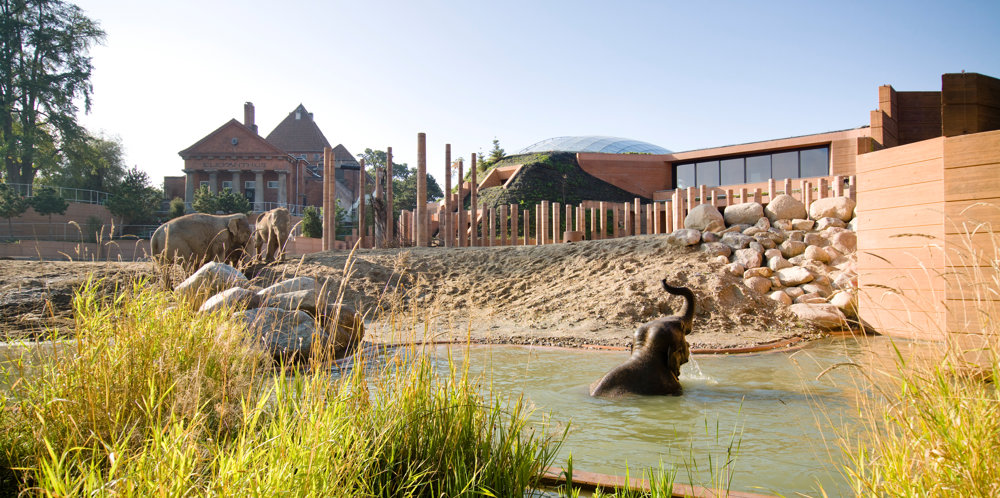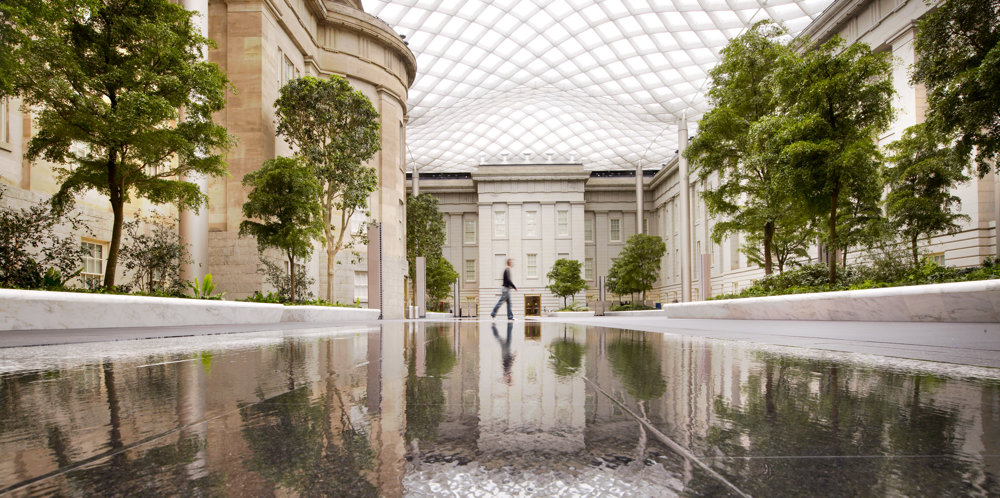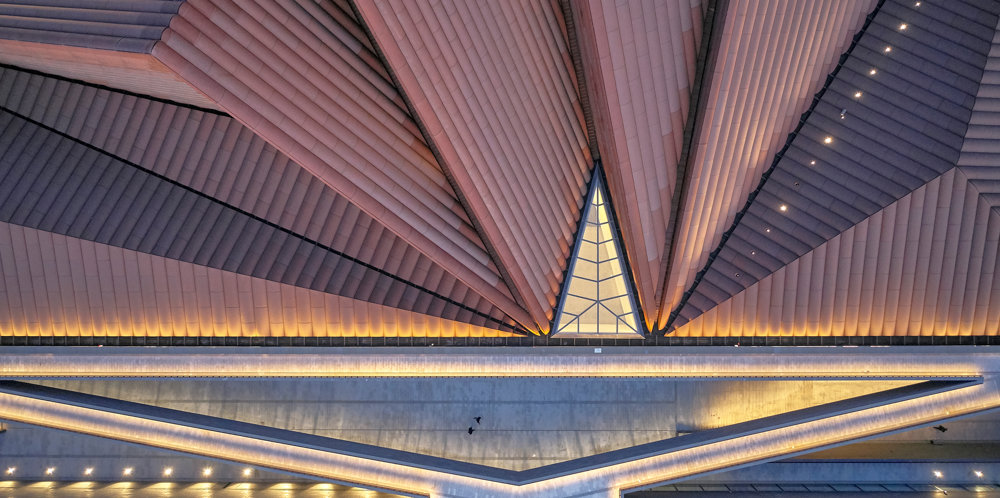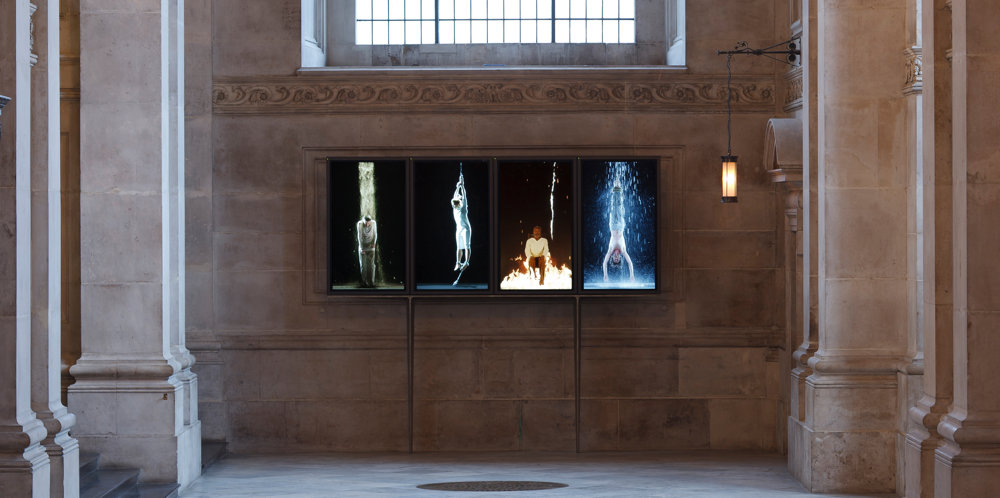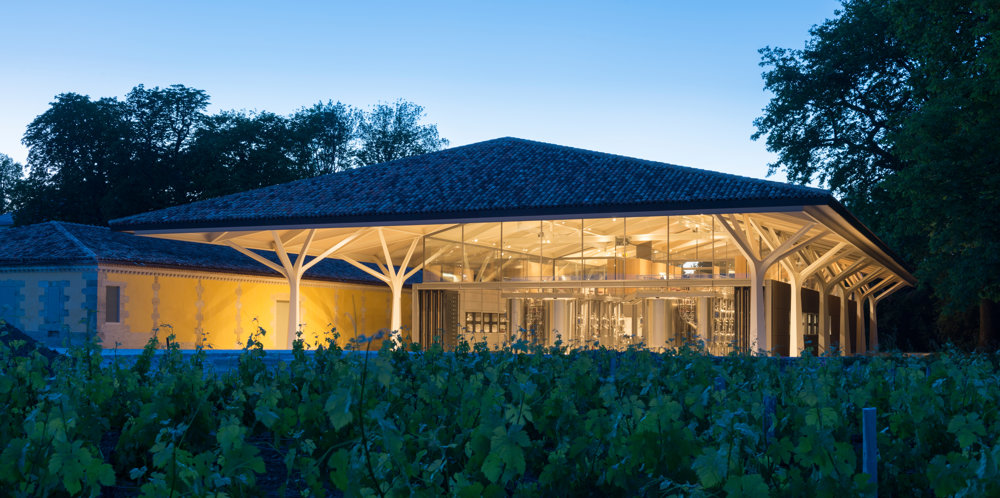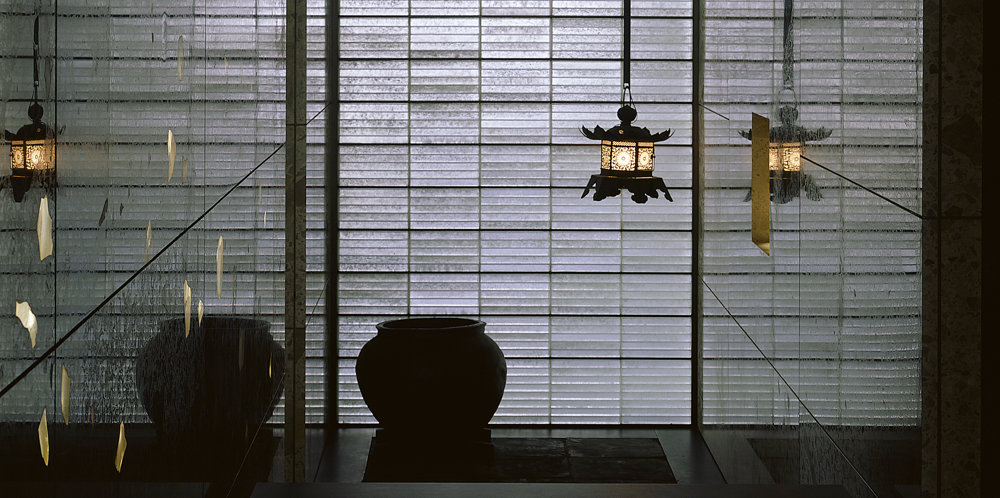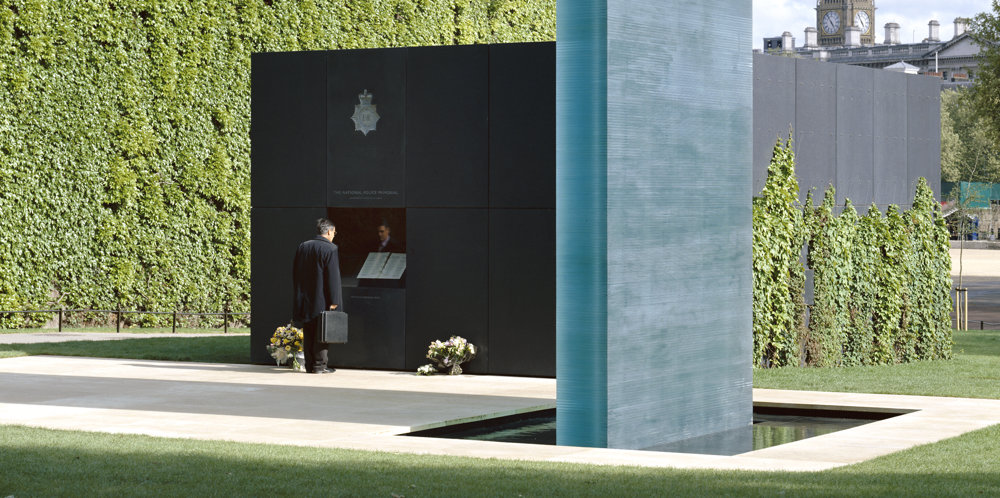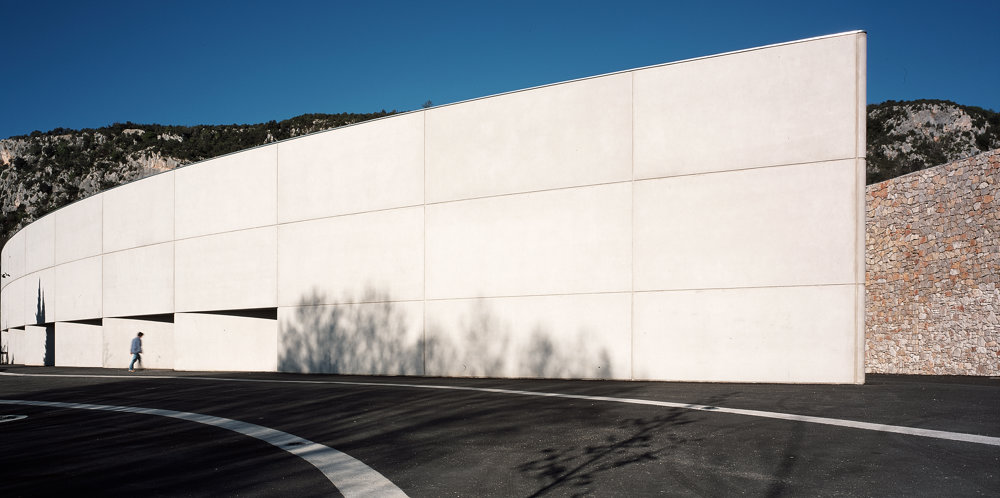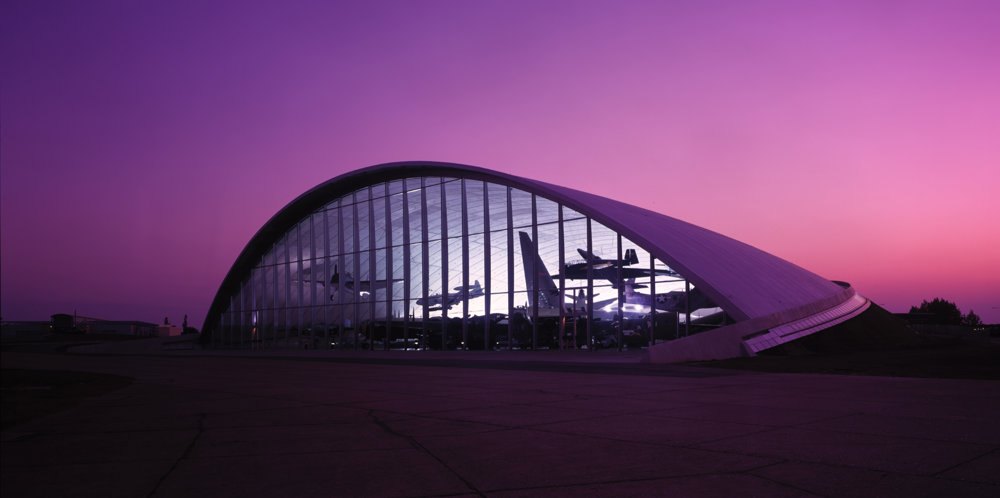View the 360 tour
Narbo Via is a new museum of Roman antiquities situated at the heart of Narbonne. The building, designed and engineered by the practice’s integrated team, is set to become a new landmark at the entrance to the city, on a site adjacent to the Canal de la Robine and pioneers a new approach to museographic design.
Raised atop a podium, the museum provides a sense of restrained civic and architectural monumentality at the entrance to the city. The building incorporates galleries for permanent and temporary exhibitions, a multimedia education centre, auditorium, restaurant and library, as well as research, restoration and storage facilities. The centrepiece of the museum is a ‘Lapidary Wall’, which forms a natural barrier at the heart of the museum, separating the public galleries from the more private restoration spaces. Visitors are able to glimpse the work of the archaeologists and researchers through its mosaic of stone and light, and the flexible display framework allows the reliefs to be easily reconfigured and used as an active tool for learning.
The museum spaces are unified beneath a concrete roof canopy, which provides thermal mass and contributes to a comprehensive environmental strategy. The canopy is elevated above a clerestory, punctuated with light wells, and it extends to shade a wide public plaza around the museum. In addition, the majority of the services in the building are contained within a subterranean service void. Cool air is supplied at a low level and at low velocity, allowing a smaller volume of air to be conditioned, while maintaining a comfortable environment. The large spatial volumes formed by the high ceilings create a thermal flywheel effect that naturally pushes warm air upwards, where it is exhausted out.
The architecture is significantly informed by an honest approach to materials. This extends to the expression of the coloured concrete walls. Layers of dry-mixed concrete were tamped into place on-site, the resultant stratification calls to mind not only the archaeological nature of the museum, but also the inherent appearance of Roman concrete. The structural response also follows a similar approach that is underpinned by simplicity. The walls are solid, thermally insulated and load bearing. They support the roof with long span pre-cast reinforced concrete beams that span onto a grid of deep concrete primary beams. Full width glazed bays occur at breaks in the concrete walls.
The landscaping reinforces the connection with the water of the canal to create a tranquil natural setting. Inspired by formal French gardens and the Roman courtyard, the museum’s grounds feature an amphitheatre for open-air displays and events. The design anticipates a welcoming, landscaped entrance via a new ramp that links the museum to the existing towpath along the Canal de la Robine. This will create a serene pedestrian connection to the city centre, which will now be only a short walk from the museum.









